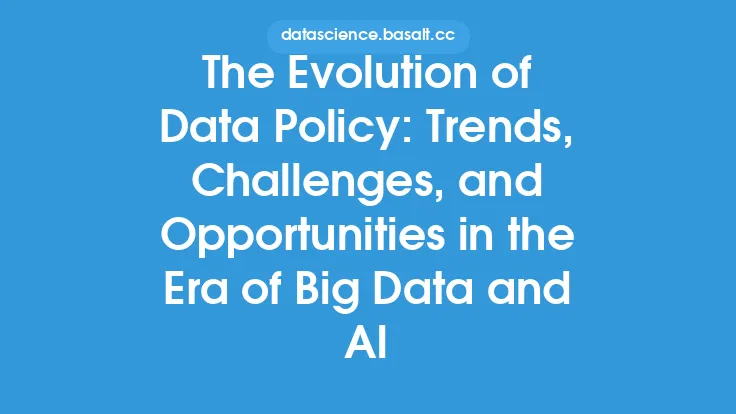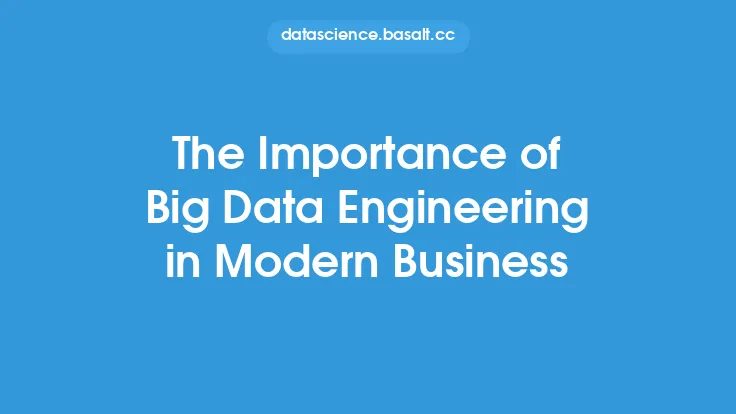In today's digital landscape, the sheer volume, variety, and velocity of data being generated are unprecedented. This phenomenon, commonly referred to as Big Data, presents both opportunities and challenges for organizations seeking to leverage data-driven insights to inform their decisions. At the heart of effectively utilizing Big Data lies the critical issue of data consistency. Data consistency refers to the accuracy, completeness, and reliability of data across different systems, applications, and repositories within an organization. Ensuring data consistency is essential because it directly impacts the quality of insights derived from data analysis, which in turn affects business decision-making, operational efficiency, and ultimately, the bottom line.
Introduction to Data Consistency Challenges
The challenges in maintaining data consistency in the age of Big Data are multifaceted. Firstly, the diversity of data sources and formats complicates the process of standardizing and integrating data. Organizations often deal with structured data (e.g., databases), semi-structured data (e.g., XML files), and unstructured data (e.g., emails, documents), each requiring different handling and processing techniques. Secondly, the rapid pace at which data is generated and updated can lead to inconsistencies if not managed properly. For instance, customer information might be updated in one system but not reflected in others, leading to discrepancies. Lastly, the distributed nature of modern data systems, with data spread across on-premise servers, cloud services, and edge devices, introduces additional layers of complexity in ensuring data consistency.
Technical Aspects of Data Consistency
From a technical standpoint, achieving data consistency involves several key strategies. Data normalization is one such technique, which involves organizing data in a database to minimize data redundancy and dependency. Normalization helps in reducing data anomalies and improving data integrity. Another approach is the use of data validation rules, which are predefined constraints that ensure data entered into a system meets specific criteria, such as format, range, or consistency with existing data. Furthermore, data integration tools and technologies, such as ETL (Extract, Transform, Load) processes, play a crucial role in combining data from multiple sources into a unified view, thereby helping to identify and rectify inconsistencies.
Opportunities for Innovation
Despite the challenges, the pursuit of data consistency in the Big Data era also presents opportunities for innovation. Advanced technologies like blockchain, for example, offer a decentralized and immutable way to record transactions and data interactions, potentially enhancing data integrity and consistency across networks. Artificial intelligence (AI) and machine learning (ML) can be leveraged to automate data quality checks, detect anomalies, and predict potential inconsistencies before they occur. Additionally, cloud computing provides scalable and flexible infrastructure for data management, enabling organizations to more easily implement and maintain data consistency measures across their operations.
Data Consistency in Real-Time Data Processing
The rise of real-time data processing and streaming analytics adds another dimension to the data consistency challenge. As data is generated and processed in real-time, ensuring that this data is consistent and accurate becomes even more critical. Technologies such as Apache Kafka, Apache Storm, and Apache Flink are designed to handle high-throughput and provide low-latency, fault-tolerant, and scalable data processing, which can help in maintaining data consistency in real-time systems. However, managing data consistency in such environments requires careful consideration of factors like data ingestion rates, processing capacities, and output latency to prevent data loss or corruption.
Future Directions and Conclusion
Looking ahead, the importance of data consistency will only continue to grow as data volumes increase and organizations become more reliant on data-driven decision-making. Future research and development are likely to focus on more sophisticated AI and ML techniques for automated data quality management, as well as innovative uses of emerging technologies like quantum computing for complex data processing tasks. In conclusion, data consistency is a foundational element of data quality, and its significance in the age of Big Data cannot be overstated. By understanding the challenges and opportunities related to data consistency, organizations can better navigate the complexities of Big Data management and unlock the full potential of their data assets.





